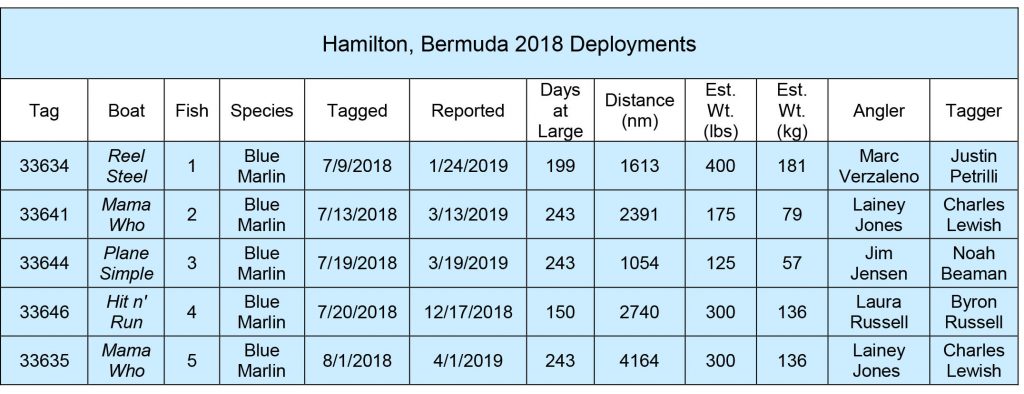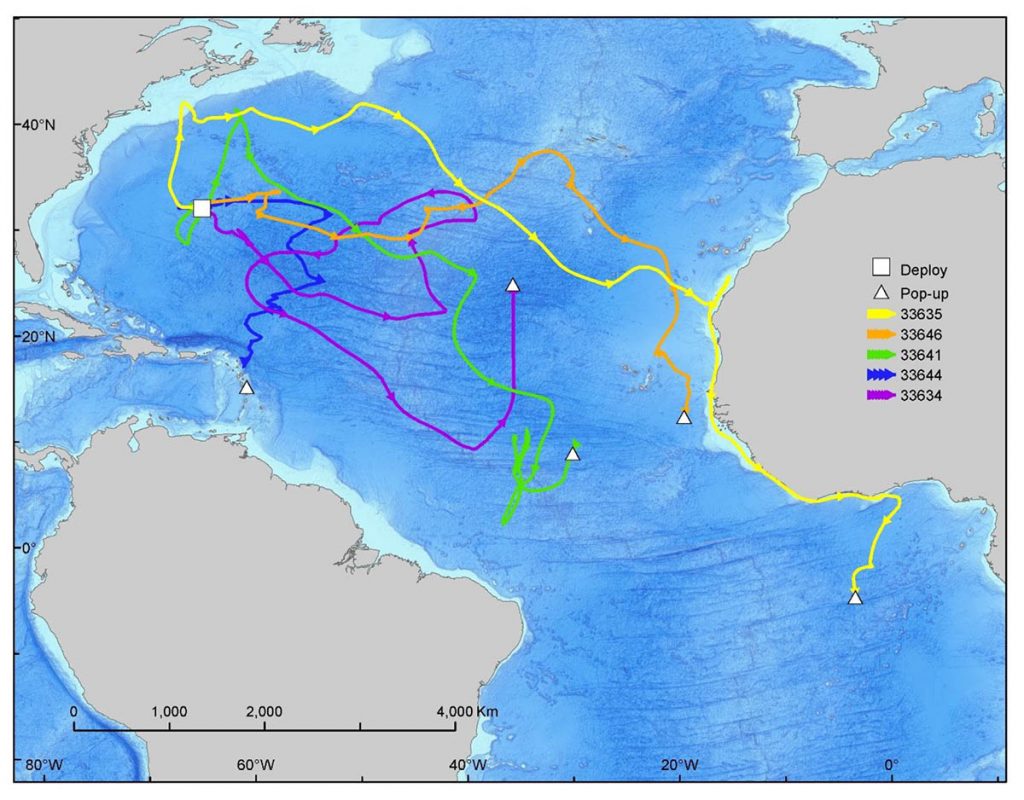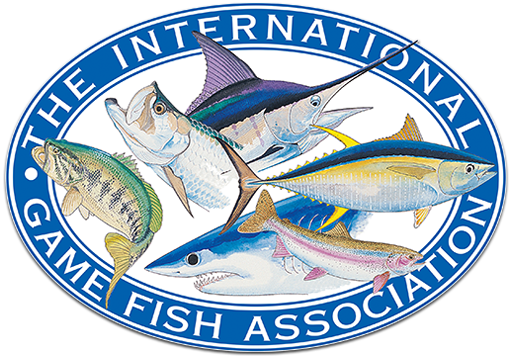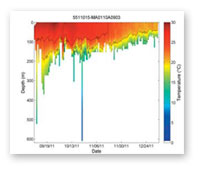Race Updates
The 2018 IGMR Bermuda Triple Crown Billfish Championship kicked off in July with five tags generously sponsored for deployment on blue marlin.
The first tag of the event was deployed on July 9, 2018, on a 400 lb (181 kg) blue marlin by Justin Petrilli alongside Reel Steel with Captain Jason Parker after being reeled in by Marc Verzaleno. Four days later, on July 13, 2018, the second tag of the event was deployed on a 175 lb (79 kg) blue marlin by Charles Lewish after being hooked by Lainey Jones aboard Mama Who with Captain Wil Thornhill.
The third tag of the event was deployed on July 19, 2018 on a 125 lb (57 kg) blue marlin by Noah Beaman after being reeled in by Jim Jensen aboard Plane Simple with Captain Jimmy Werling. One day later, on July 20, 2018, the fourth tag of the event was deployed on a 300 lb (136 kg) blue marlin by Byron Russell after being caught by Laura Russell aboard Hit n Run with Captain Dave Fields. The final tag of the event was deployed on August 1, 2018, on a 300 lb (136 kg) blue marlin while alongside Mama Who with Captain Will Thornhill.


The tag on Fish 4 (tag #33464) was the first to surface on December 17, 2018, 150 days after deployment and 2,740 nautical miles (nm) from the tagging location, taking second place in the event. Following deployment, this fish traveled east/southeast before turning northeast.
Southwest of the Azores, the fish turned southeast again before the tag popped off east of Cape Verde for a total estimated track length of 4,412 nm*. Over the course of the deployment, this fish spent approximately 60% of the time within 10 m (33 ft) of the surface where the water temperature ranged from 24 – 29°C (75 – 84°F). Time spent in deeper water was greatest between 25 – 150 m (82 – 492 ft) where the water temperature ranged between 18 – 28°C (64 – 82°F). The deepest dive of the deployment occurred in early September to a depth of 236 m (774 ft) where the water temperature was 15°C (59°F), the coldest water experience during the deployment.
The tag on Fish 1 (tag #33634) was the next to surface on January 24, 2019, 199 days after deployment and 1,613 nm from the tagging location, taking fourth place in the event. Following deployment, Fish 1 traveled southeast and then turned north and circled back towards Bermuda. South of Bermuda, the fish then turned southeast again before turning north where the tag popped off in the middle of the Atlantic for a total estimated track length of 6,684 nm*. Over the course of the deployment, Fish 1 spent approximately 60% of the time within 10 m (33 ft) of the surface where the water temperature ranged from 22 – 28°C (72 – 82°F). Deeper dives were generally ranged between 25 – 200 m (82 – 656 ft) where the water temperature ranged from 18
– 28°C (64 – 82°F). The deepest dive occurred in mid-November to a depth of 360 m (1,181 ft) where the water temperature was 16°C (60°F), the coldest water experience during the deployment.
The next tag to surface popped off Fish 2 (tag #33641) on March 13, 2019 after reaching the full deployment period of 243 days. The tag surfaced 2,391 nm from the tagging location taking third place in the event. Following deployment, the fish initially swam southwest before circling back to the northeast towards Nova Scotia. South of Nova Scotia, the fish then turned southeast and followed that general direction towards South America. The fish then circled around between South America and the west coast of Africa before the tag popped off for a total estimated track length of 6,578 nm*. Although the transmitted data for this tag was sporadic, the available data suggests this fish spent approximately 50% of the time within 10 m (33 ft) of the surface where the water temperature ranged between 26 – 29°C (79 – 84°F). Deeper dives were typically between 25 – 100 m (82 – 328 ft) where the water temperature ranged between 22 – 28°C (72 – 82°F). The deepest dive occurred on the first day of the deployment to a depth of 220 m (722 ft) where the water temperature was 19°C (66°F), the coldest water experienced during the deployment.
The tag on Fish 3 (tag #33644) was the next to surface on March 16, 2019 after reaching the full deployment period of 243 days. The tag surfaced 1,054 nm from the tagging location taking fifth place in the event. Following deployment this fish traveled east before zigzagging south towards the Caribbean where the tag popped off for a total estimated track length of 2,743 nm*. Over the course of the deployment, this fish spent approximately 60% of the time within 10 m (33 ft) of the surface where the water temperature ranged between 26 – 29°C (79 – 84°F). Deeper dives were generally between 25 – 100 m (82 – 328 ft) where the water temperatures ranged from 22 – 28°C (72 – 82°F). The deepest dive occurred in early December to a depth of 435 m (1,427 ft) where the water temperature was 15°C (59°F), the coldest water experienced during the deployment.
The final tag to surface popped off Fish 5 (tag #33635) on April 1, 2019 after reaching the full deployment period of 234 days. The tag surfaced 4,164 nm from the tagging location taking first place in the event. This track is also the fourth longest track in IGMR history. Following deployment, this fish traveled northeast towards Nova Scotia and then turned southeast towards the northern coast of West Africa. The fish then followed the coast of West Africa before turning south to cross the equator where the tag popped off for a total estimated track length of 6,665 nm*. Although the transmitted data for this tag was sporadic, the available data suggests this fish spent approximately 60% of the time within 10 m (33 ft) of the surface where the water temperature ranged from 26 – 30°C (79 – 86°F). Deeper dives were typically between 25 – 100 m (82 – 328 ft) where the water temperature ranged between 24 – 28°C (75 – 82°F). The deepest dive occurred on the first day of deployment to a depth of 285 m (935 ft) where the water temperature was 19°C (66°F). The coldest water experienced during the deployment was 17°C (63°F) at a depth of 89 m (292 ft) in early March. Congratulations to team Mama Who for taking first place in the event and claiming fourth place on the IGMR all-time leader board.For the 2018 tagging season, the IGMR switched to X-tags by Microwave Telemetry due to the high number of tags with very short deployment times in the previous season. The 2018 IGMR Bermuda Triple Crown was the first event to deploy these tags and the results were better than expected. Three of the five tags deployed in the event stayed on their fish for the full 8-month deployment period, and the other two fish had deployment times of 150 and 199 days. These long deployments provide significant insight into the migratory nature of these fish. For example, Fish 5 from this event spent significant time along the west coast of Africa, a behavior not previously documented for an IGMR fish, and is only the second fish tagged from Bermuda that crossed into the Southern Hemisphere. The tag on Fish 4 popped up east of Cape Verde and two other tags have popped off near Cape Verde in previous years, suggesting this may be an important location for blue marlin. The combined tagging efforts over the past four years from the IGMR Bermuda Triple Crown has highlighted the broad use of the Atlantic by blue marlin. Fish tend to travel east across the Atlantic, with some taking a northerly approach and others taking a southerly approach. Interestingly, only one tagged fish has moved significantly west of Bermuda. These wide-ranging movements highlight the need for long-term data sets to identify movement patterns, areas of importance, and the effect of changing environmental conditions on future habitat use.
We are very excited to add more data from Atlantic blue marlin to the IGMR database and hope to increase this data set in years to come. We are grateful to the tag sponsors, captains, anglers, crew, and all other participants that made the 2018 IGMR Bermuda Triple Crown so successful. These datasets help us to learn about billfish behavior in an effort to increase their conservation and protect the sport we love for future generations of fishing!


